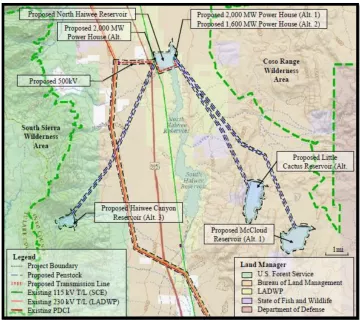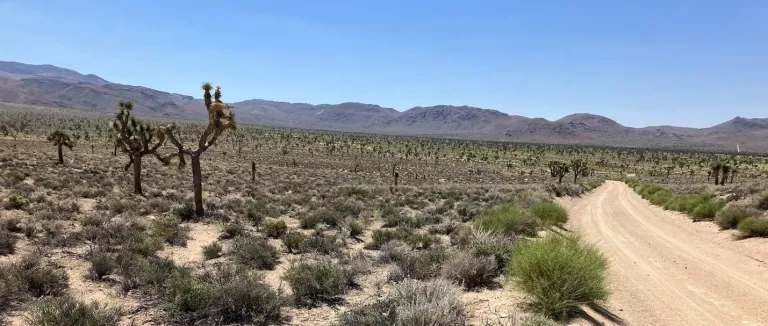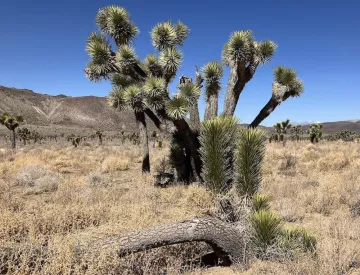By Lynn Boulton
Premium Energy has re-applied for a preliminary permit from the Federal Energy Regulatory Commission (FERC) for a hydro pumped storage project south of Olancha (project P-15307-000). A preliminary permit allows them to do studies, but not ground-disturbing activities. If Premium Energy wants to do studies that disturb the ground, then they have to get permits from the appropriate agencies to do so. A preliminary permit gives the proponent first "dibs" on a location. A hydro pumped-storage project pumps water from a lower reservoir to an upper reservoir and then generates electricity by releasing the water from the upper reservoir, letting it go back down to the lower one. You pump it up during the day when there is a possibility that the power to do so comes from clean energy. You release it at night when power is needed. It takes more energy to pump the water uphill than it generates when it is released. However, the company pays less for the power to pump it uphill during the day and charges more than that for the power the system generates at night. Hence a profit.

So, what does Premium Energy have in mind? The lower reservoir would be between the new North Haiwee Dam 2 that is still being built and the Butterworth Ranch, south of Olancha. They were given a preliminary permit in March of 2020 (P-14991-001) for the same proposal as this one, but that expired. This proposal is based on old information; the old dam and old Cactus Flat Road. It doesn't reflect any of the changes underway with the North Haiwee Dam 2 and road realignment projects.
Premium Energy's proposal includes three alternatives for an upper reservoir: Little Cactus Flat or McCloud Flat in the Coso Range, or Haiwee Canyon which would be in the proposed South Sierra Wilderness Addition. The Federal Energy Regulatory Commission (FERC) did not approve the Haiwee Canyon alternative when they issued a preliminary permit (P-14991-001) in 2020 because it is in a proposed wilderness area. FERC should not approve it this time either. However, FERC did approve the other two alternatives even though those areas are managed by the BLM under the Desert Renewable Energy and Conservation Plan (DRECP) and in the Mojave ground squirrel Area of Critical Environmental Concern (ACEC). The DRECP and the ACEC are special BLM management plans, not protections under federal law. Will FERC issue a license for a project that is in conflict with the BLM management plan? That remains to be seen.
Once Premium Energy completes its studies, they will need to prepare an application for a license with their plan for one upper reservoir and one lower reservoir. It would also include their plan for transmitting energy to market; presumably Southern California. The NEPA process kicks in and FERC prepares and EA or an EIS at that time.

If you haven't been to Little Cactus Flat, please go. It is stunningly beautiful Joshua tree woodland. It would be dug up to put in penstocks for either a Little Cactus Flat reservoir or a McCloud reservoir. An unimaginable number of Joshua trees would be destroyed if this project is eventually approved. Under the recent California law, the Western Joshua Tree Conservation Act, Premium Energy would be required to either relocate the trees or pay for each tree they remove.
"WJTCA Incidental Take Permits, which provide authorization for take in association with renewable energy, housing, public works, and other projects. The WJTCA incidental take permit is streamlined through the option for an individual or business to choose to pay a standard mitigation fee rather than complete mitigation actions." -- Wildlife.CA.GOV
Fees are based on the size of the tree: $340 for under 1 meter, $500 for 1 meter to under 5 meters,$2,500 for 5 meters or greater. Most Joshua trees are less than 5 meters. this is not a strong deterrent for a project of this size.

Once again, environmentalists face the conflict of two high-priority land uses. Protecting a healthy ecosystem or fighting climate change. So, we need to look at how useful pumped storage will be. The purpose of pumped storage is to provide electricity for Los Angeles after the sun goes down. There will be more water loss through evaporation with two additional reservoirs -- the upper and lower pumped storage reservoirs. The water to initially fill the reservoir and the water to replenish water lost to evaporation would come from the LA Aqueduct system from Owens Valley. There are three transmission lines running down the Owens Valley: a 115kV SCE line, a 230kV LADWP line, and 500kV DC Pacific Intertie. There are capacity issues with all three between Haiwee and Los Angeles. The solution might require a new transmission line. These issues are part of the studies that Premium Energy would do under a preliminary permit.
Other aspects to consider are that it takes energy to pump the water uphill. That energy could come from clean energy sources or fossil fuels that generate greenhouse gases and contribute to climate change. Construction of the project will also generate greenhouse gases. Is it a clean energy project? Maybe not.
To read or download the proposal, go to the FERC eLibrary search and put "P-15307" in the "Enter Docket Number" field and select "all" in the "Past 60 Days" field. Then click on the blue Search button.